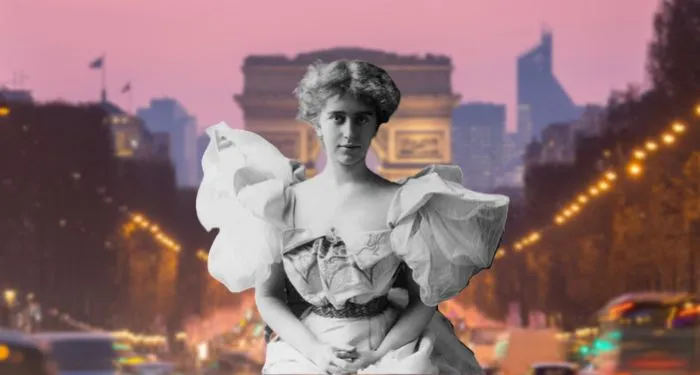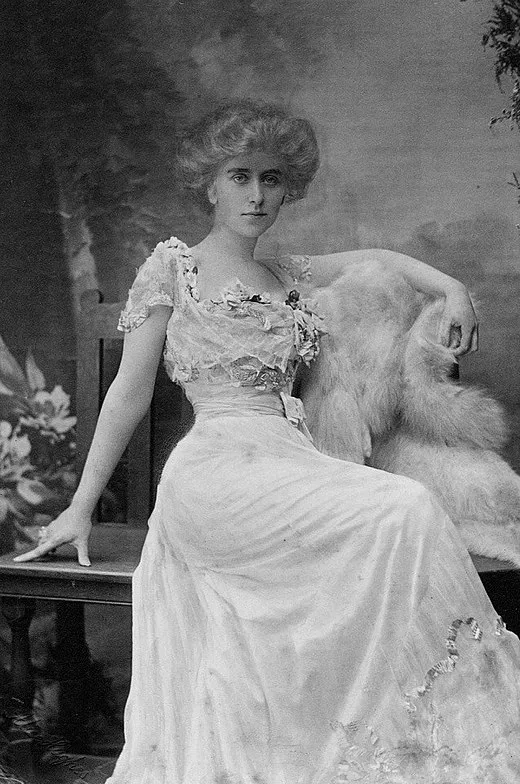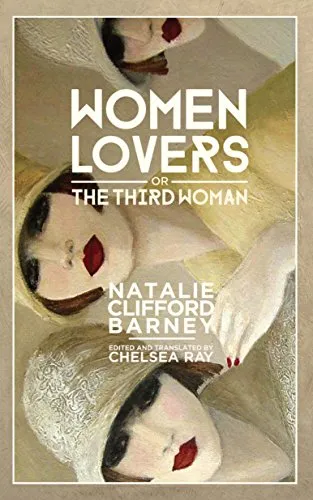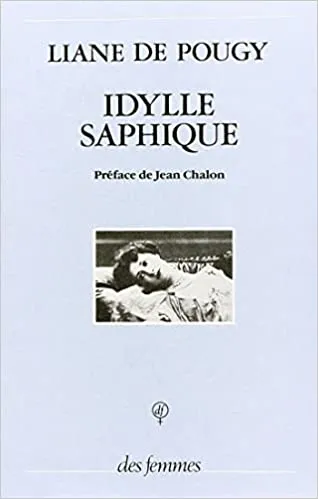
The Scandalous Life of Natalie Clifford Barney
One of the most towering literary figures of the Parisian literary scene was a drama-prone lesbian, known for her many lovers and fantastic parties. The scandalous life of the poet Natalie Clifford Barney inspired almost as many novels as it did gossip columns. This woman would have been the most popular of any generation, but her prominence in Paris in the 1920s is especially important to the decadent literary scene of that era.

Her literary salons in Paris were attended by people like Colette, Gertrude Stein, Eugène Jolas, Ezra Pound, and dozens of more notable guests. She was also a writer, but the community she created in her literary salons was even more important. Her nickname was “L’Amazone” (the Amazon), given to her by the poet Remy de Gourmont. She got the nickname because she made the front page for riding a horse astride, as opposed to sidesaddle, like an Amazonian warrior woman of Greek mythology.
Natalie Clifford Barney was born on October 31, 1876, in Dayton, Ohio, to an incredibly wealthy family. Her parents, Alice Pike and Albert Clifford Barney, had a ton of money from the railway industry. They also had a second child, Laura, and both Natalie and Laure were given high-class educations in line with their family’s financial status.
Before her marriage, Alice was an artist, but she gave up her pursuits after she got married. However, a chance meeting with Oscar Wilde in 1882 caused Alice to begin to pursue the arts again, writing and performing in operas. Her paintings were also shown at the Smithsonian in Washington D.C.
As for Natalie, the meeting with Oscar Wilde imparted a great sense of purpose for her as well: “In her memoir Aventures de l’esprit (1929) she records what she nominates as her First Adventure: the story of how Wilde scooped her up as she ran past him fleeing a group of small boys, and held her out of their reach before sitting her down on his knee to tell her a story, what she recalled as ‘a wonderful tale.’”
Natalie Moves to Paris
In 1888, Natalie began to attend Les Ruches boarding school in France. She knew she was a lesbian at the age of 12, and had her first relationship at age 17. She met a like-minded girl named Eva Palmer on vacation one summer, and the two stayed friends for a long time as well. Though she did not pursue higher education, she was a lifelong learner, as evidenced by her decades in Paris.

After her father died in 1902, Natalie inherited a sizable fortune and began hosting her famous salon, with a special focus on work by women. She moved to her home at 20 Rue Jacob in the Latin Quarter of Paris in 1909.
The importance of the salon was in the exchange of ideas. Younger writers, painters, and other artists could find established mentors to help them. The salonnière (the fabulous female host of a salon) cultivated a collaborative environment for artists. Natalie’s mother Alice hosted salons for painters in Paris, while Natalie focused on writers. As a wealthy patron of the arts, Natalie also used her fortune to assist artists in need.
During the First World War, Natalie’s salon persisted despite the chaos of the world around it. As it persisted, she received visitors like Truman Capote, Marcel Proust, Colette, Ezra Pound, Djuna Barnes, Mina Loy, James Joyce and countless more important writers.
In 1927, Natalie formed L’Acadèmie des Femmes as a response to the Acadèmie Française refusing to accept women into its ranks. Though it was an informal organization, recognition by Natalie was important for the literary elite of Paris.
During the Second World War, Natalie stayed in Florence and paused the salon. She restarted it as soon as she was able. After the war, she started a poetry prize in Renée Vivien’s name and continued to fund publications honoring women writers.
In 1899, Natalie had her first well-documented affair with Liane de Pougy, a famous courtesan. Natalie dressed as a pageboy and seduced her by saying she was on a mission from Sappho. This was also one of the many affairs of Natalie’s that inspired fiction: “Liane went on to write a fictionalised account of their relationship, Idylle Saphique, which became a best seller. All of Parisien society, of course, knew Natalie was the model for ‘Flossie,’ the main character’s female lover.”
An important love of Natalie’s was the poet Renée Vivien. Like Natalie, she inherited a fortune from her father and moved to Paris to be an out lesbian. Though Renée dumped Natalie in 1901, Natalie tried to keep in contact with her until Renée’s death.
One of Natalie’s many significant relationships began during the first World War, with the painter Romaine Brooks. They stayed in an open relationship for over fifty years. Natalie also had a long-term relationship with Élisabeth de Gramont, an outspoken socialist duchess. Natalie even “wrote up a marriage contract” for herself and Élisabeth.
In addition, Natalie had a shorter relationship with Colette (a frequent attendee of her salons), and a longer one with Dolly Wilde (Oscar Wilde’s niece). Natalie also inspired the character Valérie Seymour in The Well of Loneliness by Radclyffe Hall. She also served as the basis for the main characters in Ladies’ Almanack by Djuna Barnes and L’Ange et les Pervers by Lucie Delarue-Mardrus.
She and her longest-term partner, Romaine, broke up when Natalie was 90. Natalie never stopped falling in love, and she was a devoted lover of women for her entire life. The title of Suzanne Rodrgiquez-Hunter’s biography of Natalie, Wild Heart: A Life: Natalie Clifford Barney and the Decadence of Literary Paris, perfectly captures the decadent nature of Natalie’s insistence of a life full of love, writing, and the pursuit of knowledge.
Natalie’s Lasting Legacy

With all of these poetic experiences to drive her art, it’s no wonder that Natalie was a prolific writer. In total, Natalie published “five poetry collections, […] three volumes of epigrams, two essay collections, one novel, and three memoirs.” She also wrote epigrams, thought to be solely the domain of male poets.
She published a book reflecting on her life and friendships, Aventures de l’Esprit, in 1929. Her novel Amants Féminins ou les Troisième was a fictionalized account of a throuple she’d been in with Liane de Pougy and Mimi Franchetti. This novel had been lost, and the novel that gained her attention during her lifetime was The One Who Is Legion, published in 1930, about a person who dies and wakes up without memories or gender.
Her last two memoirs, Souvenirs Indiscrets (1960) and Traits and Portraits (1963), documented her life and the many writers she had known.
She died in 1972, leaving behind an enduring legacy of art, culture, and writers that still define Paris to this day. She was buried at Cimetière de Passy. The literary scene of Paris probably could not have flourished without Natalie’s sponsorship and stewardship of the literary salon.
It was even more impressive that she lived as an out-and-proud lesbian, despite the criminalization of queer life in the 20th century. Lesbians who contributed to literary culture were especially marginalized, so it’s important to do reparative reading work to recognize the contributors queer people have made to literary history.











